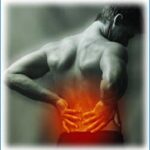 Back pain is the second most common reason patients seek ambulatory medical care in the United States.
Back pain is the second most common reason patients seek ambulatory medical care in the United States.
Researchers at Harvard Medical School, in Boston surveyed the nation about CAM use for back pain.
First, the details.
- Associations between the perceived helpfulness of various CAM therapies for back pain were derived from the 2002 National Health Interview Survey.
And, the results.
- Among 31,044 people who responded to the survey, 1647 were CAM users with back pain.
- Approximately 6% of the US population used CAM to treat their back pain in 2002.
- 95% of respondents who used CAM for back pain reported using 1 of the following modalities.
- Chiropractic
- Massage
- Herbal therapy
- Acupuncture
- Yoga/tai chi/qigong
- Relaxation techniques
- Users of CAM for back pain tended to be young, non-Hispanic white, women, and had completed at least high school.
- 60% who used CAM for back pain perceived a “great deal” of benefit.
- The factor associated with perceived benefit from CAM:
- “Conventional medical treatment would not help.”
- Factors associated with less perceived benefit from CAM:
- Fair to poor self-reported health status
- Referral by a conventional medical practitioner for CAM
- The 2 most common CAM modalities used for back pain were chiropractic and massage.
- Using chiropractic as a reference:
- Those associated with less perceived benefit: massage, relaxation techniques, and herbal therapy .
- Those with similar perceived benefit: yoga/tai chi/qigong and acupuncture.
The bottom line?
The authors concluded, “The majority of respondents who used CAM for back pain perceived benefit.”
The researchers believe their findings support conducting more detailed study of CAM use among those who suffer from back pain
1/10/11 10:51 JR